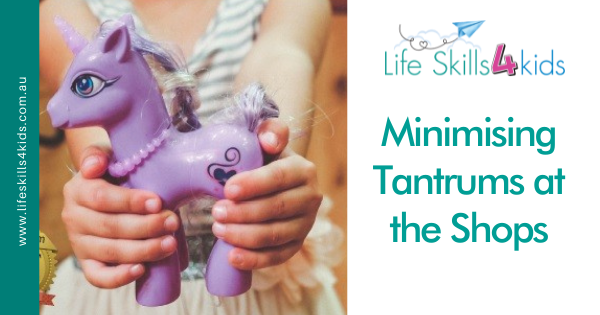NEW DIGITAL PLATFORM – You can now access the
Great Health Guide through ISSUU – CLICK HERE TO ACCESS
Minimising Tantrums at the Shops
By Deb Hopper
Published in The Great Health Guide
CLICK HERE FOR THE AUDIO VERSION
Taking kids shopping is one of those activities that can feel like you are in a balancing act, a circus or a nightmare movie. This is especially true when pre-schoolers and toddlers are concerned. On a shopping trip, there is a fine line between finding and buying all that you need and managing children’s behaviour.
Some children love to sit in the trolley and look around and take it all in, but when we think about those nightmare shopping trips, it includes pre-schoolers who feel too big to be in the trolley, throwing tantrums in the aisle and refusing to walk, toddlers reaching out and grabbing items off the shelf, death stares from fellow shoppers and the occasional words of ‘advice’ from well-meaning others.
For many parents, it’s an activity they try and avoid with children. However, sometimes there is no choice but to put on the mental armour, be prepared and go forth and shop!
REASONS WHY SOME KIDS FIND SHOPPING DIFFICULT
Before we get to the tips, let’s take a look at some reasons why shopping is hard for kids. For many little ones, the sensory demands of the shopping centre are very overwhelming.
When our senses take in too much information, our bodies can be overwhelmed and they are pushed into a stress-like fight or flight response.
Some parts of the environment that contribute to this stress response for children include:
1. Lighting – The lighting in shops is very bright. Shops need to make the products look good and stand out. For
some children, this is too much visually and they can’t take it all in. Have you ever had to pop to the shops to grab 2 items when you are really tired? It’s hard to focus and take in information and it all looks a blur. For other children, the lighting helps ‘wake up’ their sensory system looks exciting and increases their energy levels
and excitement levels. Your child running around, looking and touching items and trying to be ‘helpful’ may not be helpful as you try to shop.
2. Noise – Shopping centres are really noisy. Music, people and background noise can be very distracting for some kids and some kids can find this noise overwhelming as they find it hard to know what to focus on auditorily. Some children find this background noise very distressing, even if it’s not loud.
3. Visual distractions – The constant movement of people in shopping centres can be very distracting for some children, which means that they may stop and look at something or someone and be left behind as you move on. Or, the constant movement of people can be stressful to some other children.
The movement of people constantly can be all too much and it pushes their bodies into a stress fight or flight response.
YOUR CHILD WILL PROBABLY NOT BE ABLE TO TELL YOU WHY THEY FIND SHOPPING
HARD OR WHY THEY HAVE THAT MELTDOWN.
As adults we need to be ‘detectives’ and try and figure out if any of the above reasons are impacting on behaviour and maybe just test out a few of the strategies below and see what works and helps.
Kids today are growing up in a fast-paced world where information and opportunity overload can be overwhelming.
Based on many years of clinical experience as an Occupational Therapist, Deb Hopper has been using her Just Right Kids® Model to teach children to communicate and manage their stress and anxiety by:
- Identifying their “body speed”,
- Understanding their stress triggers, and
- Implementing simple strategies to reduce anxiety and stress.

In next month’s issue of GHGTM, we look at strategies to help make shopping time easier with children.
Deb Hopper is passionate about helping children achieve their potential. A practicing Occupational Therapist at Lifeskills4kids on the NSW Mid North Coast, Australia, she understands the day to day struggles that children, parents, and teachers face.


